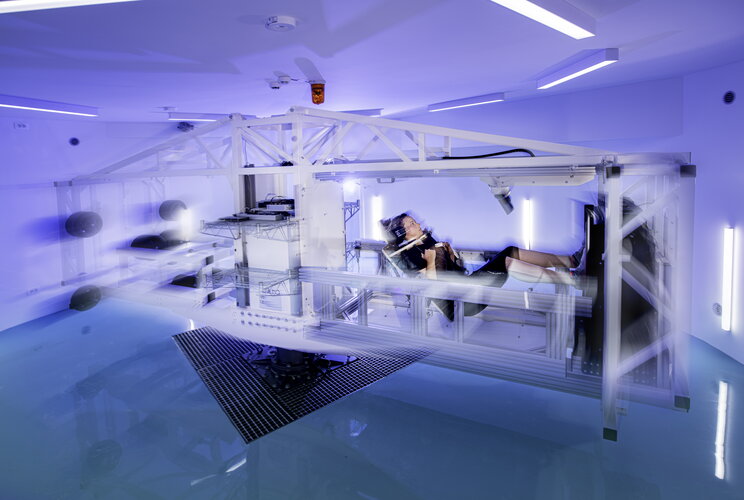The ESA-owned Short Arm Human Centrifuge has been upgraded, installed and inaugurated at the Olympic Sport Centre Planica facility near Kranjska Gora, Slovenia. Soon to be home to ESA bedrest studies, this recently enhanced clinical research centre will help further scientists’ knowledge of human physiology in space.
Run by the Jozef Stefan Institute on behalf of ESA, bedrest studies at the facility offer scientists a way to see how the human body adapts to weightlessness. This allows researchers to test techniques, known as “countermeasures”, to counteract the negative effects of living in space.
The Short-Arm Human Centrifuge offers an extra suite of possible countermeasures by exposing people to artificial gravity. At 35 revolutions of the 3-m arms per minute, riders may experience a force of gravity that is more than twice their own body weight at their centre of mass, and more than four times their body weight at their feet.
Artificial gravity has the potential to reduce many of the negative effects of weightlessness on the human body in one go. As spinning encourages blood to flow back towards a subject’s feet, they are provided with a force to push against, while they follow a carefully controlled exercise regime of squats, jumps, heel raises and toe raises, for 30 minutes per day. These countermeasures should mitigate the reduction of bone and muscle mass that astronauts, and bedrest subjects, can otherwise experience.
The Planica facility provides equipment to collect all ESA Bedrest Core Data, allowing for comparison between different ESA-sponsored studies. It can also be maintained under adjustable environmental conditions, such as a low-oxygen atmosphere, which is highly relevant for human exploration missions.
In bedrest studies, volunteers spend from five to 60 days in bed, usually tilted backwards with their heads at 6° below the horizontal. They are not permitted to stand up unless a research programme demands it and must perform all daily activities in bed – including eating, showers and exercise.
The results of these studies also benefit people on Earth. Many negative effects of living in space are similar to those experienced naturally as we age, such as osteoporosis, muscle loss and orthostatic intolerance.
ESA Director General Josef Aschbacher signed the loan agreement for the centrifuge with representatives from the Jozef Stefan Institute during his tour of Slovenia last week.
Slovenia has been an ESA Associate member since 2016 and recently signed on to the Terrae Novae programme (formerly known as the European Exploration Envelope Programme (E3P).



 Image:
Image: